Report on Hofstede's Cultural Dimensions and Organizational Culture
VerifiedAdded on 2021/01/01
|6
|1307
|113
Report
AI Summary
This report delves into Hofstede's cultural dimension theory, examining its impact on business environments. It outlines the dimensions of individualism/collectivism, power distance, uncertainty avoidance, and femininity/masculinity, critically evaluating each. The report identifies uncertainty avoidance as the most beneficial cultural dimension, emphasizing its role in helping individuals manage uncertainty. It suggests practical strategies to enhance cultural dimensions within organizations, such as promoting collectivism, fostering flexible organizational structures, encouraging delegation of responsibility, and developing employees' skills in team working and uncertainty management. The report concludes by highlighting the significance of Hofstede's study and its implications for organizational culture and leadership, with references to relevant academic sources.
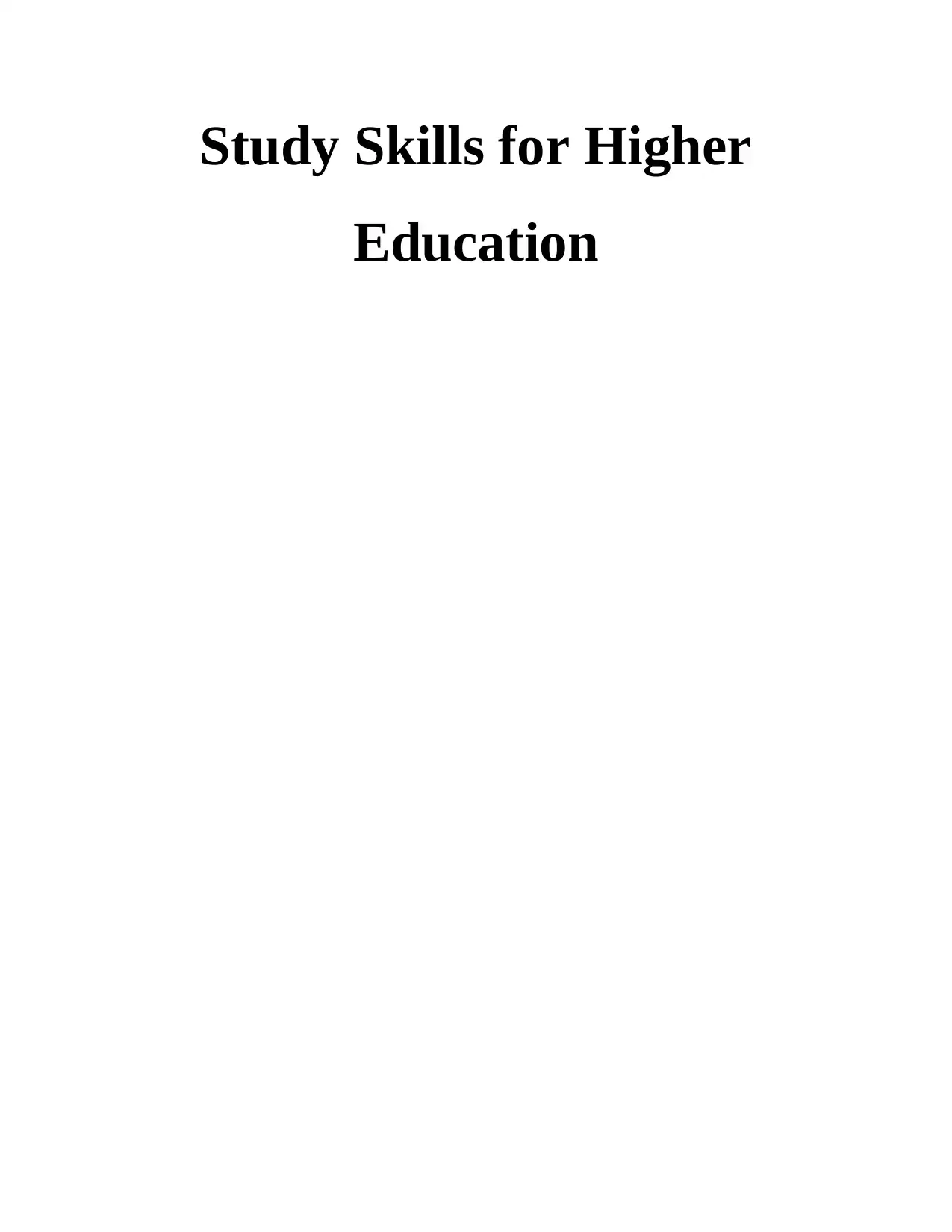
Study Skills for Higher
Education
Education
Paraphrase This Document
Need a fresh take? Get an instant paraphrase of this document with our AI Paraphraser
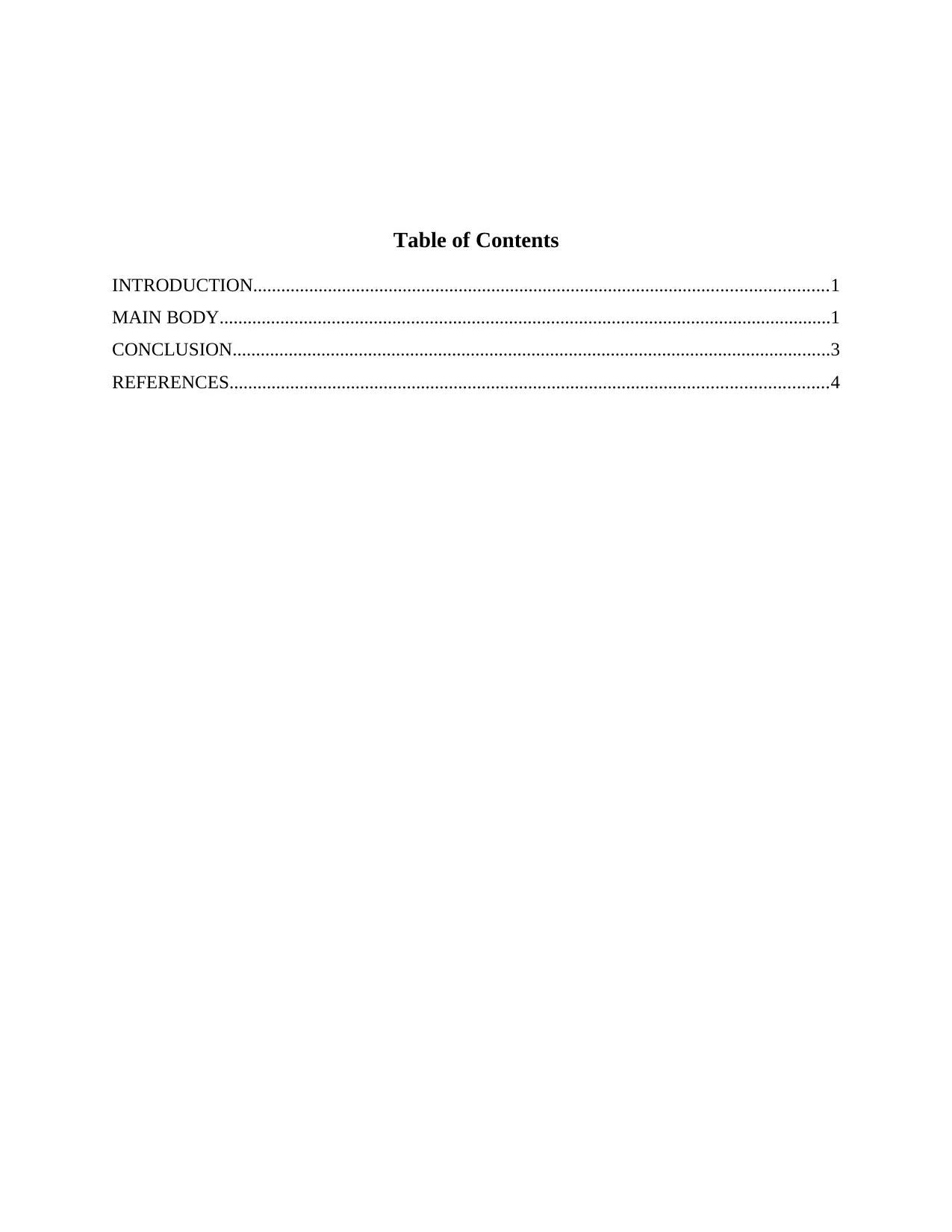
Table of Contents
INTRODUCTION...........................................................................................................................1
MAIN BODY...................................................................................................................................1
CONCLUSION................................................................................................................................3
REFERENCES................................................................................................................................4
INTRODUCTION...........................................................................................................................1
MAIN BODY...................................................................................................................................1
CONCLUSION................................................................................................................................3
REFERENCES................................................................................................................................4
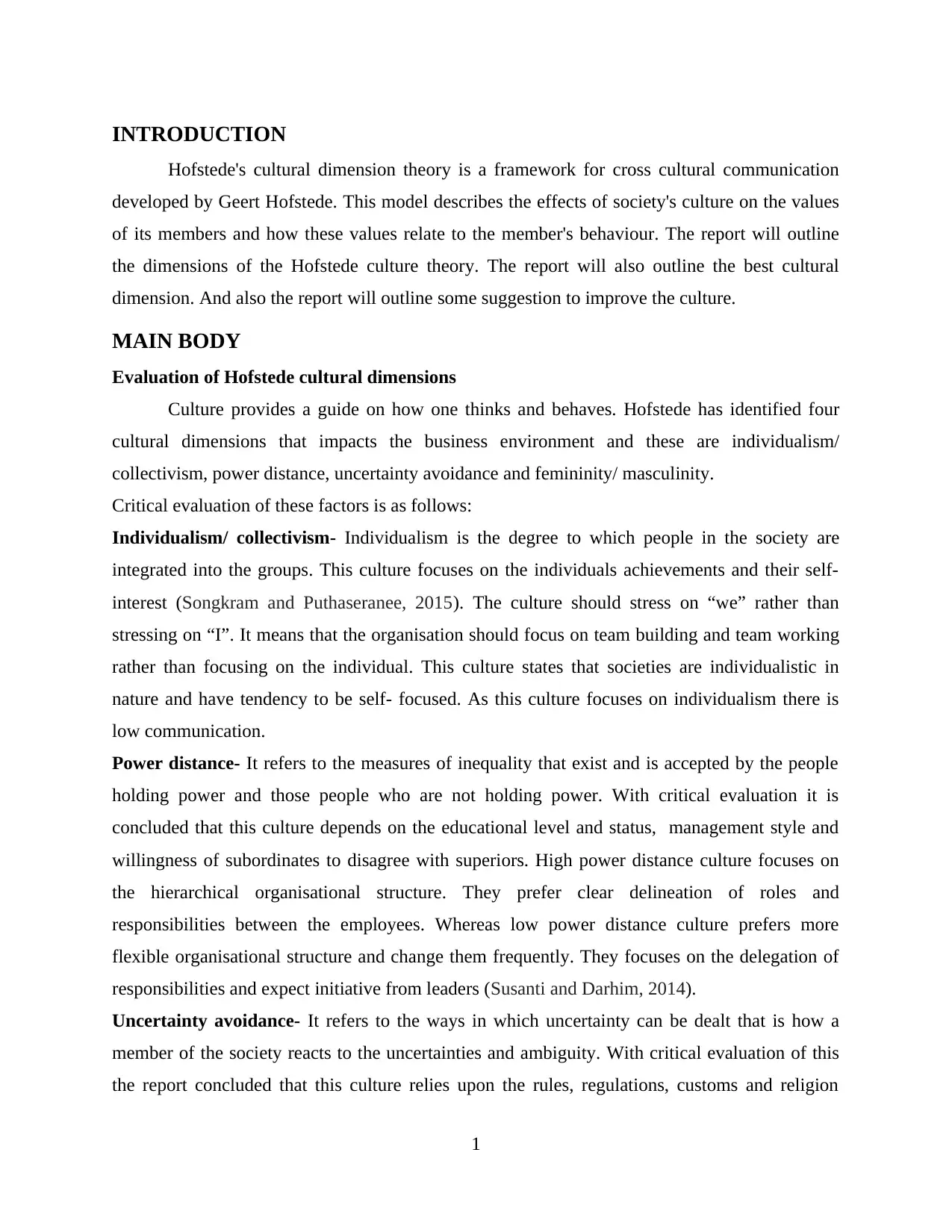
INTRODUCTION
Hofstede's cultural dimension theory is a framework for cross cultural communication
developed by Geert Hofstede. This model describes the effects of society's culture on the values
of its members and how these values relate to the member's behaviour. The report will outline
the dimensions of the Hofstede culture theory. The report will also outline the best cultural
dimension. And also the report will outline some suggestion to improve the culture.
MAIN BODY
Evaluation of Hofstede cultural dimensions
Culture provides a guide on how one thinks and behaves. Hofstede has identified four
cultural dimensions that impacts the business environment and these are individualism/
collectivism, power distance, uncertainty avoidance and femininity/ masculinity.
Critical evaluation of these factors is as follows:
Individualism/ collectivism- Individualism is the degree to which people in the society are
integrated into the groups. This culture focuses on the individuals achievements and their self-
interest (Songkram and Puthaseranee, 2015). The culture should stress on “we” rather than
stressing on “I”. It means that the organisation should focus on team building and team working
rather than focusing on the individual. This culture states that societies are individualistic in
nature and have tendency to be self- focused. As this culture focuses on individualism there is
low communication.
Power distance- It refers to the measures of inequality that exist and is accepted by the people
holding power and those people who are not holding power. With critical evaluation it is
concluded that this culture depends on the educational level and status, management style and
willingness of subordinates to disagree with superiors. High power distance culture focuses on
the hierarchical organisational structure. They prefer clear delineation of roles and
responsibilities between the employees. Whereas low power distance culture prefers more
flexible organisational structure and change them frequently. They focuses on the delegation of
responsibilities and expect initiative from leaders (Susanti and Darhim, 2014).
Uncertainty avoidance- It refers to the ways in which uncertainty can be dealt that is how a
member of the society reacts to the uncertainties and ambiguity. With critical evaluation of this
the report concluded that this culture relies upon the rules, regulations, customs and religion
1
Hofstede's cultural dimension theory is a framework for cross cultural communication
developed by Geert Hofstede. This model describes the effects of society's culture on the values
of its members and how these values relate to the member's behaviour. The report will outline
the dimensions of the Hofstede culture theory. The report will also outline the best cultural
dimension. And also the report will outline some suggestion to improve the culture.
MAIN BODY
Evaluation of Hofstede cultural dimensions
Culture provides a guide on how one thinks and behaves. Hofstede has identified four
cultural dimensions that impacts the business environment and these are individualism/
collectivism, power distance, uncertainty avoidance and femininity/ masculinity.
Critical evaluation of these factors is as follows:
Individualism/ collectivism- Individualism is the degree to which people in the society are
integrated into the groups. This culture focuses on the individuals achievements and their self-
interest (Songkram and Puthaseranee, 2015). The culture should stress on “we” rather than
stressing on “I”. It means that the organisation should focus on team building and team working
rather than focusing on the individual. This culture states that societies are individualistic in
nature and have tendency to be self- focused. As this culture focuses on individualism there is
low communication.
Power distance- It refers to the measures of inequality that exist and is accepted by the people
holding power and those people who are not holding power. With critical evaluation it is
concluded that this culture depends on the educational level and status, management style and
willingness of subordinates to disagree with superiors. High power distance culture focuses on
the hierarchical organisational structure. They prefer clear delineation of roles and
responsibilities between the employees. Whereas low power distance culture prefers more
flexible organisational structure and change them frequently. They focuses on the delegation of
responsibilities and expect initiative from leaders (Susanti and Darhim, 2014).
Uncertainty avoidance- It refers to the ways in which uncertainty can be dealt that is how a
member of the society reacts to the uncertainties and ambiguity. With critical evaluation of this
the report concluded that this culture relies upon the rules, regulations, customs and religion
1
⊘ This is a preview!⊘
Do you want full access?
Subscribe today to unlock all pages.

Trusted by 1+ million students worldwide
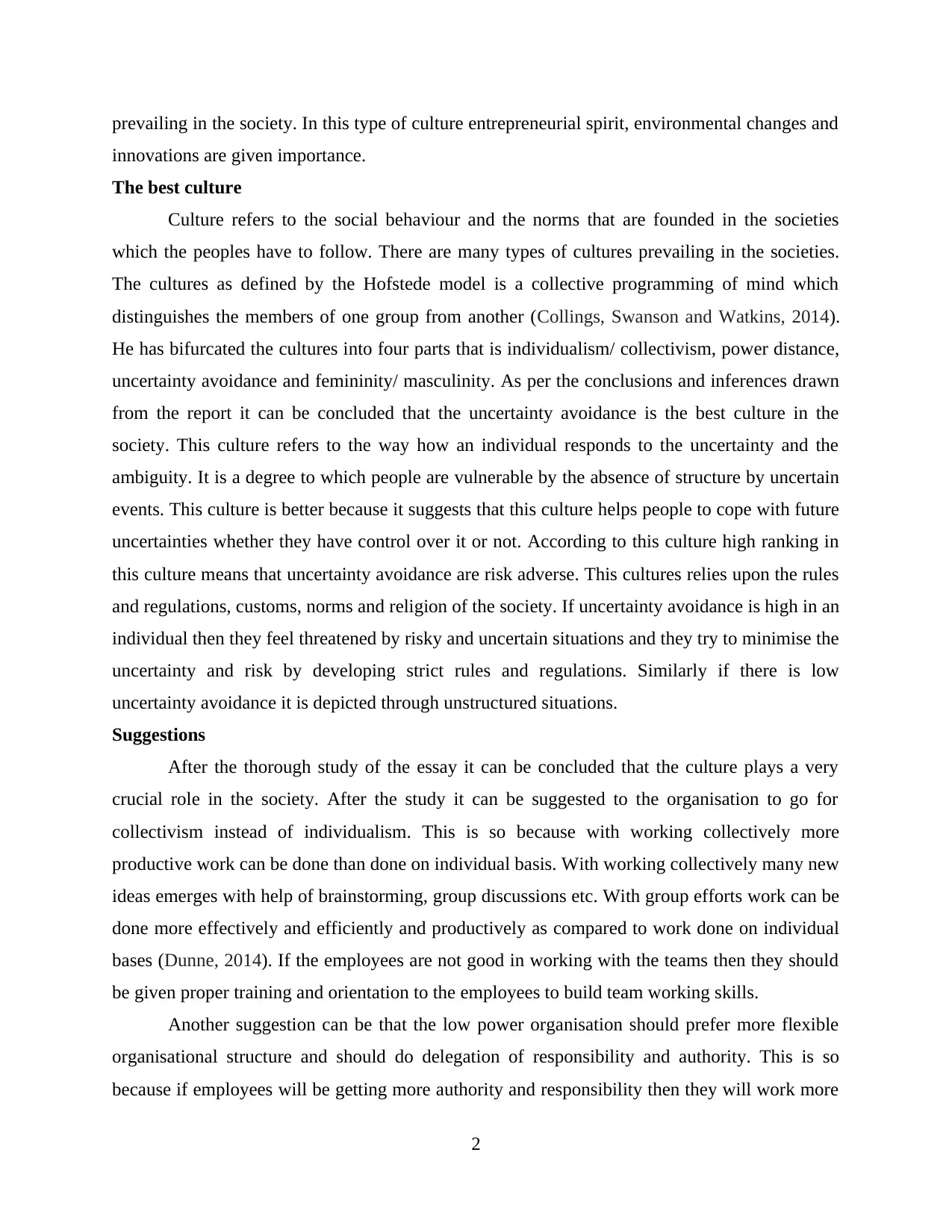
prevailing in the society. In this type of culture entrepreneurial spirit, environmental changes and
innovations are given importance.
The best culture
Culture refers to the social behaviour and the norms that are founded in the societies
which the peoples have to follow. There are many types of cultures prevailing in the societies.
The cultures as defined by the Hofstede model is a collective programming of mind which
distinguishes the members of one group from another (Collings, Swanson and Watkins, 2014).
He has bifurcated the cultures into four parts that is individualism/ collectivism, power distance,
uncertainty avoidance and femininity/ masculinity. As per the conclusions and inferences drawn
from the report it can be concluded that the uncertainty avoidance is the best culture in the
society. This culture refers to the way how an individual responds to the uncertainty and the
ambiguity. It is a degree to which people are vulnerable by the absence of structure by uncertain
events. This culture is better because it suggests that this culture helps people to cope with future
uncertainties whether they have control over it or not. According to this culture high ranking in
this culture means that uncertainty avoidance are risk adverse. This cultures relies upon the rules
and regulations, customs, norms and religion of the society. If uncertainty avoidance is high in an
individual then they feel threatened by risky and uncertain situations and they try to minimise the
uncertainty and risk by developing strict rules and regulations. Similarly if there is low
uncertainty avoidance it is depicted through unstructured situations.
Suggestions
After the thorough study of the essay it can be concluded that the culture plays a very
crucial role in the society. After the study it can be suggested to the organisation to go for
collectivism instead of individualism. This is so because with working collectively more
productive work can be done than done on individual basis. With working collectively many new
ideas emerges with help of brainstorming, group discussions etc. With group efforts work can be
done more effectively and efficiently and productively as compared to work done on individual
bases (Dunne, 2014). If the employees are not good in working with the teams then they should
be given proper training and orientation to the employees to build team working skills.
Another suggestion can be that the low power organisation should prefer more flexible
organisational structure and should do delegation of responsibility and authority. This is so
because if employees will be getting more authority and responsibility then they will work more
2
innovations are given importance.
The best culture
Culture refers to the social behaviour and the norms that are founded in the societies
which the peoples have to follow. There are many types of cultures prevailing in the societies.
The cultures as defined by the Hofstede model is a collective programming of mind which
distinguishes the members of one group from another (Collings, Swanson and Watkins, 2014).
He has bifurcated the cultures into four parts that is individualism/ collectivism, power distance,
uncertainty avoidance and femininity/ masculinity. As per the conclusions and inferences drawn
from the report it can be concluded that the uncertainty avoidance is the best culture in the
society. This culture refers to the way how an individual responds to the uncertainty and the
ambiguity. It is a degree to which people are vulnerable by the absence of structure by uncertain
events. This culture is better because it suggests that this culture helps people to cope with future
uncertainties whether they have control over it or not. According to this culture high ranking in
this culture means that uncertainty avoidance are risk adverse. This cultures relies upon the rules
and regulations, customs, norms and religion of the society. If uncertainty avoidance is high in an
individual then they feel threatened by risky and uncertain situations and they try to minimise the
uncertainty and risk by developing strict rules and regulations. Similarly if there is low
uncertainty avoidance it is depicted through unstructured situations.
Suggestions
After the thorough study of the essay it can be concluded that the culture plays a very
crucial role in the society. After the study it can be suggested to the organisation to go for
collectivism instead of individualism. This is so because with working collectively more
productive work can be done than done on individual basis. With working collectively many new
ideas emerges with help of brainstorming, group discussions etc. With group efforts work can be
done more effectively and efficiently and productively as compared to work done on individual
bases (Dunne, 2014). If the employees are not good in working with the teams then they should
be given proper training and orientation to the employees to build team working skills.
Another suggestion can be that the low power organisation should prefer more flexible
organisational structure and should do delegation of responsibility and authority. This is so
because if employees will be getting more authority and responsibility then they will work more
2
Paraphrase This Document
Need a fresh take? Get an instant paraphrase of this document with our AI Paraphraser
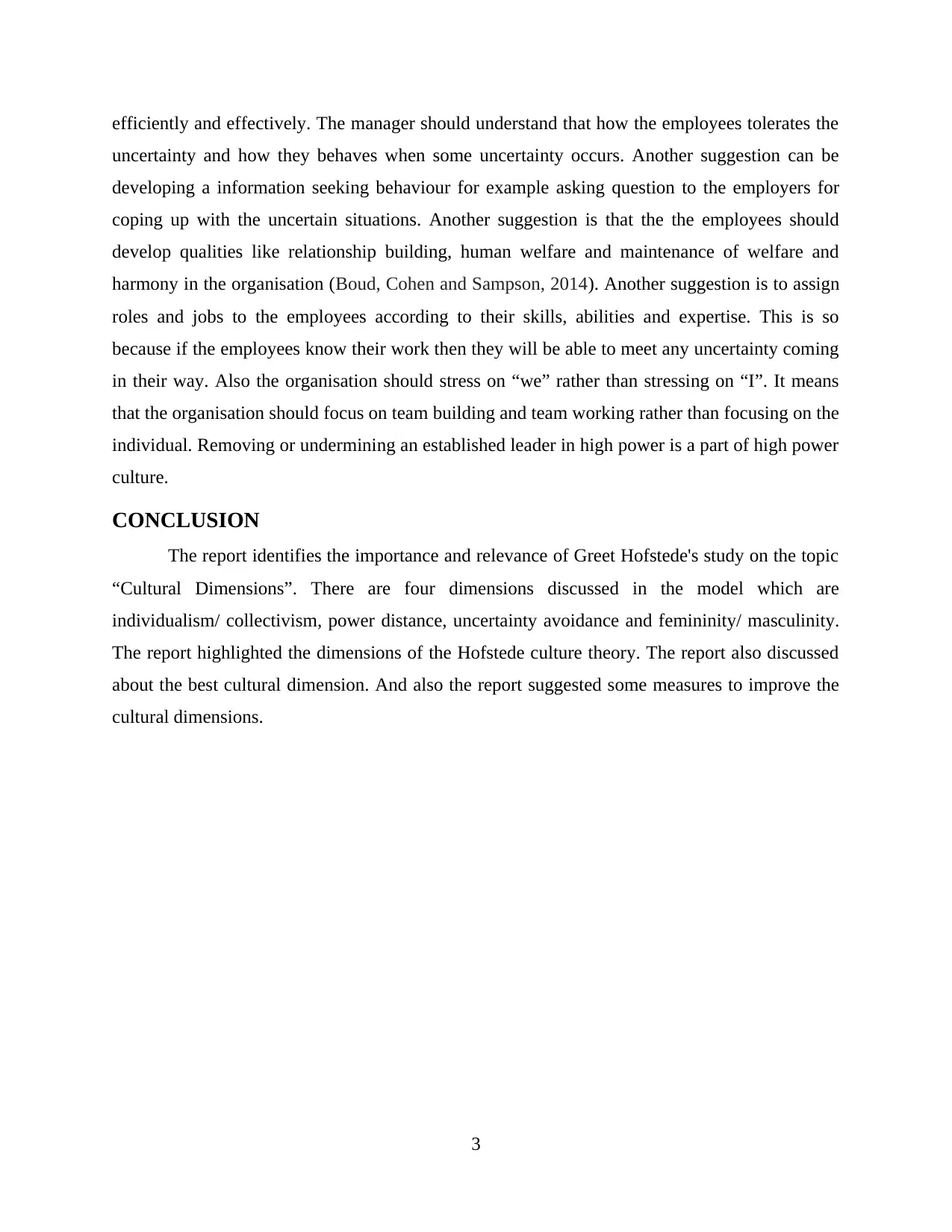
efficiently and effectively. The manager should understand that how the employees tolerates the
uncertainty and how they behaves when some uncertainty occurs. Another suggestion can be
developing a information seeking behaviour for example asking question to the employers for
coping up with the uncertain situations. Another suggestion is that the the employees should
develop qualities like relationship building, human welfare and maintenance of welfare and
harmony in the organisation (Boud, Cohen and Sampson, 2014). Another suggestion is to assign
roles and jobs to the employees according to their skills, abilities and expertise. This is so
because if the employees know their work then they will be able to meet any uncertainty coming
in their way. Also the organisation should stress on “we” rather than stressing on “I”. It means
that the organisation should focus on team building and team working rather than focusing on the
individual. Removing or undermining an established leader in high power is a part of high power
culture.
CONCLUSION
The report identifies the importance and relevance of Greet Hofstede's study on the topic
“Cultural Dimensions”. There are four dimensions discussed in the model which are
individualism/ collectivism, power distance, uncertainty avoidance and femininity/ masculinity.
The report highlighted the dimensions of the Hofstede culture theory. The report also discussed
about the best cultural dimension. And also the report suggested some measures to improve the
cultural dimensions.
3
uncertainty and how they behaves when some uncertainty occurs. Another suggestion can be
developing a information seeking behaviour for example asking question to the employers for
coping up with the uncertain situations. Another suggestion is that the the employees should
develop qualities like relationship building, human welfare and maintenance of welfare and
harmony in the organisation (Boud, Cohen and Sampson, 2014). Another suggestion is to assign
roles and jobs to the employees according to their skills, abilities and expertise. This is so
because if the employees know their work then they will be able to meet any uncertainty coming
in their way. Also the organisation should stress on “we” rather than stressing on “I”. It means
that the organisation should focus on team building and team working rather than focusing on the
individual. Removing or undermining an established leader in high power is a part of high power
culture.
CONCLUSION
The report identifies the importance and relevance of Greet Hofstede's study on the topic
“Cultural Dimensions”. There are four dimensions discussed in the model which are
individualism/ collectivism, power distance, uncertainty avoidance and femininity/ masculinity.
The report highlighted the dimensions of the Hofstede culture theory. The report also discussed
about the best cultural dimension. And also the report suggested some measures to improve the
cultural dimensions.
3
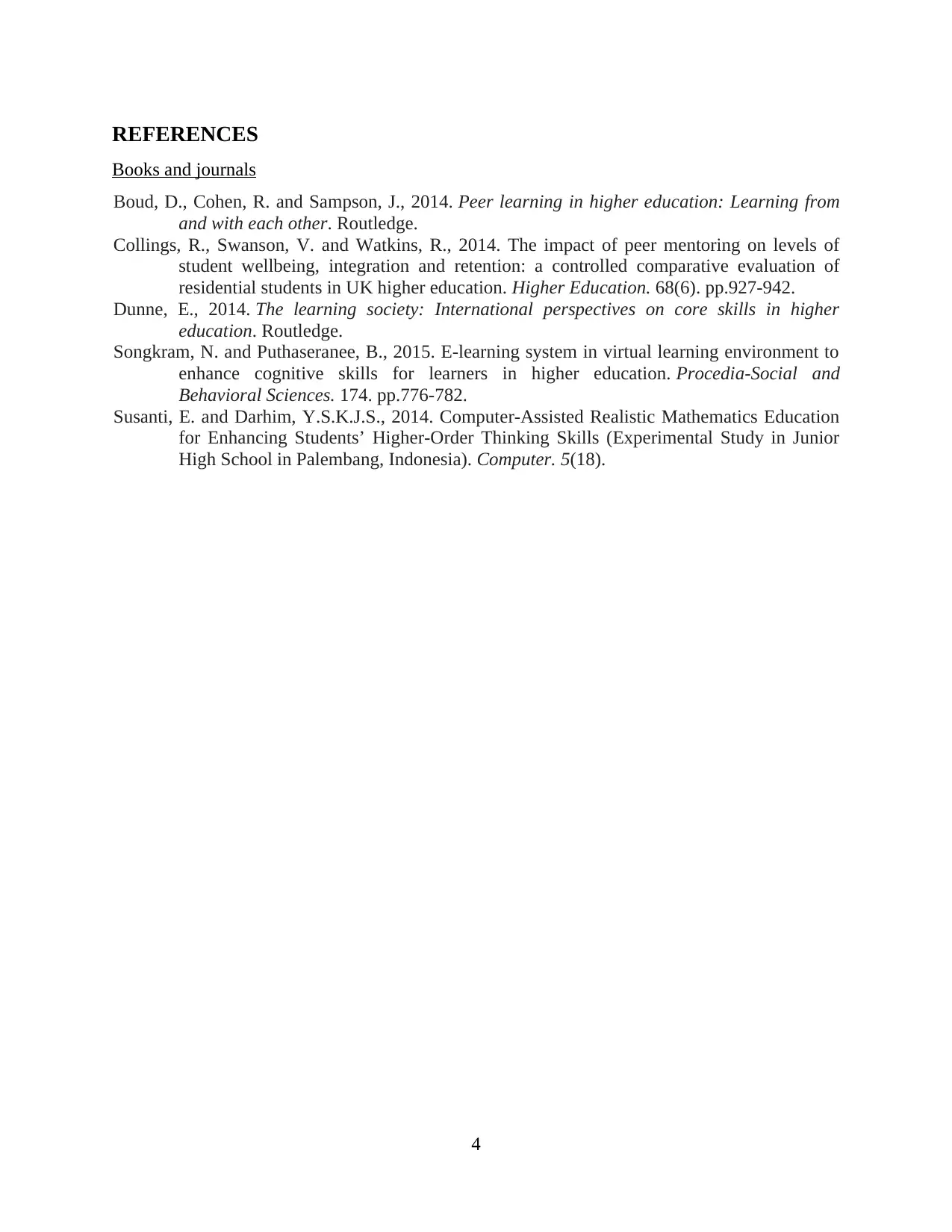
REFERENCES
Books and journals
Boud, D., Cohen, R. and Sampson, J., 2014. Peer learning in higher education: Learning from
and with each other. Routledge.
Collings, R., Swanson, V. and Watkins, R., 2014. The impact of peer mentoring on levels of
student wellbeing, integration and retention: a controlled comparative evaluation of
residential students in UK higher education. Higher Education. 68(6). pp.927-942.
Dunne, E., 2014. The learning society: International perspectives on core skills in higher
education. Routledge.
Songkram, N. and Puthaseranee, B., 2015. E-learning system in virtual learning environment to
enhance cognitive skills for learners in higher education. Procedia-Social and
Behavioral Sciences. 174. pp.776-782.
Susanti, E. and Darhim, Y.S.K.J.S., 2014. Computer-Assisted Realistic Mathematics Education
for Enhancing Students’ Higher-Order Thinking Skills (Experimental Study in Junior
High School in Palembang, Indonesia). Computer. 5(18).
4
Books and journals
Boud, D., Cohen, R. and Sampson, J., 2014. Peer learning in higher education: Learning from
and with each other. Routledge.
Collings, R., Swanson, V. and Watkins, R., 2014. The impact of peer mentoring on levels of
student wellbeing, integration and retention: a controlled comparative evaluation of
residential students in UK higher education. Higher Education. 68(6). pp.927-942.
Dunne, E., 2014. The learning society: International perspectives on core skills in higher
education. Routledge.
Songkram, N. and Puthaseranee, B., 2015. E-learning system in virtual learning environment to
enhance cognitive skills for learners in higher education. Procedia-Social and
Behavioral Sciences. 174. pp.776-782.
Susanti, E. and Darhim, Y.S.K.J.S., 2014. Computer-Assisted Realistic Mathematics Education
for Enhancing Students’ Higher-Order Thinking Skills (Experimental Study in Junior
High School in Palembang, Indonesia). Computer. 5(18).
4
⊘ This is a preview!⊘
Do you want full access?
Subscribe today to unlock all pages.

Trusted by 1+ million students worldwide
1 out of 6
Related Documents
Your All-in-One AI-Powered Toolkit for Academic Success.
+13062052269
info@desklib.com
Available 24*7 on WhatsApp / Email
![[object Object]](/_next/static/media/star-bottom.7253800d.svg)
Unlock your academic potential
Copyright © 2020–2025 A2Z Services. All Rights Reserved. Developed and managed by ZUCOL.





